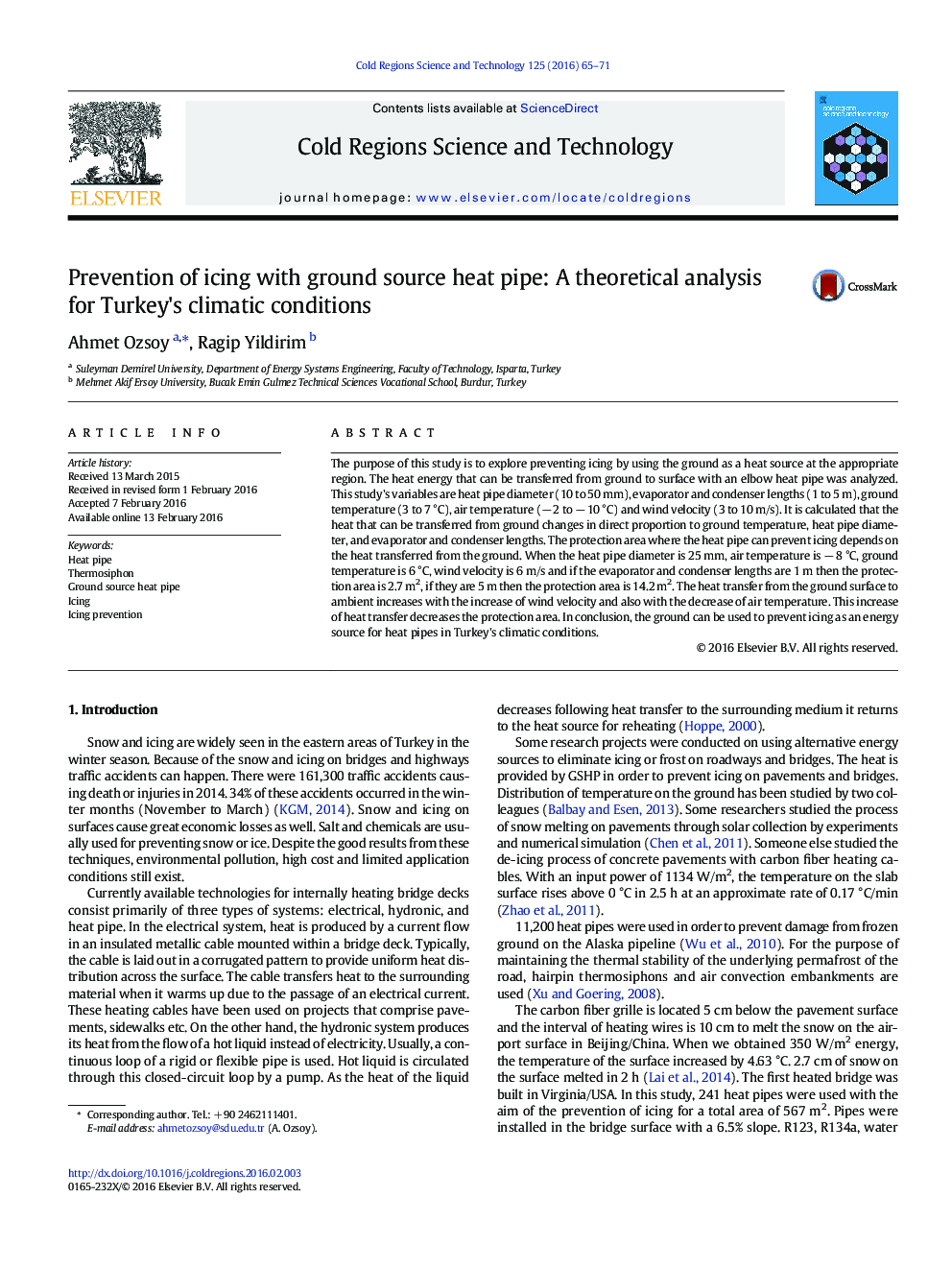| Article ID | Journal | Published Year | Pages | File Type |
|---|---|---|---|---|
| 6426625 | Cold Regions Science and Technology | 2016 | 7 Pages |
â¢Prevention of icing on the ground with heat pipe was analyzed.â¢The heat flux was found with the help of heat pipe's thermal resistance.â¢Icing prevention area provided by heat pipe at different air temperatures was calculated.â¢Both decreases of air temperature and wind velocity would make the protection area of heat pipe smaller.
The purpose of this study is to explore preventing icing by using the ground as a heat source at the appropriate region. The heat energy that can be transferred from ground to surface with an elbow heat pipe was analyzed. This study's variables are heat pipe diameter (10 to 50 mm), evaporator and condenser lengths (1 to 5 m), ground temperature (3 to 7 °C), air temperature (â 2 to â 10 °C) and wind velocity (3 to 10 m/s). It is calculated that the heat that can be transferred from ground changes in direct proportion to ground temperature, heat pipe diameter, and evaporator and condenser lengths. The protection area where the heat pipe can prevent icing depends on the heat transferred from the ground. When the heat pipe diameter is 25 mm, air temperature is â 8 °C, ground temperature is 6 °C, wind velocity is 6 m/s and if the evaporator and condenser lengths are 1 m then the protection area is 2.7 m2, if they are 5 m then the protection area is 14.2 m2. The heat transfer from the ground surface to ambient increases with the increase of wind velocity and also with the decrease of air temperature. This increase of heat transfer decreases the protection area. In conclusion, the ground can be used to prevent icing as an energy source for heat pipes in Turkey's climatic conditions.
